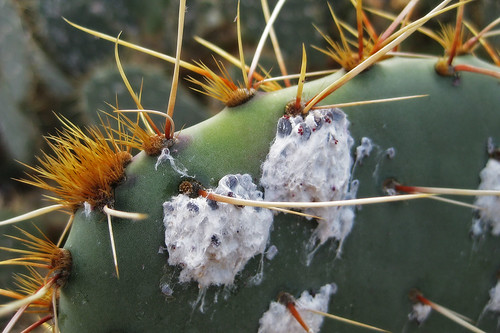 Hydrangeas are the fastcinating flower because their flower color is so wonderful. That can make your garden more gorogeous. Besides you can change if you know how to do it.
Hydrangeas are the fastcinating flower because their flower color is so wonderful. That can make your garden more gorogeous. Besides you can change if you know how to do it.Hydrangeas have 5 common varieites:
1. Hydrangea arborescens 'Grandiflora' -- Hills-of-Snow Hydrangea
Prune hills-of-snow hydrangea to the ground line each winter or early spring because it flowers abundantly on new growth, and is frequently killed back during winter. If a larger shrub is desired (3+ feet) and/or it is not killed back over the winter, prune less severely.
2. Hydrangea paniculata 'Grandiflora' -- Pee Gee Hydrangea
This is the most commonly planted hydrangea. They gradually turn to pink and remain on the plant in a semi-dried condition long after the leaves have fallen.
Pruning involves the removal of dead flowers, if unattractive, and an annual corrective pruning of vigorous shoots. Thin and/or cut back the previous season's growth in late winter or early spring, since flower clusters occur on newly developing branches.
3. Hydrangea macrophylla -- Hortensia or Florist Hydrangea
This is a commonly grown hydrangea with large globe-shaped flowers. Once moved outdoors, however, color is dependent upon the pH of the soil in which it is grown: blue if acid; pink if alkaline. There are also several white-flowered cultivars. Prune as soon as the flowers have faded and strong shoots are developing from the lower parts of the stems and crown.
Remove at the base some of the weaker shoots that are both old and new. Always try to keep several stems of old productive wood, with a sufficient number of stout new stems that will flower the following season. Early spring pruning (March), although acceptable, will result in the sacrificing of bloom for that growing season.
Winter protection of the plant should be initiated in December to preserve buds for next year's flowering. Tie the shoots together and wrap with burlap. If left unprotected, delay any spring pruning until the buds swell in order to determine which wood needs to be removed, and then cut back to below the point of injury.
4. Hydrangea quercifolia --Oakleaf Hydrangea
This plant is grown primarily for its handsome oak leaf-shaped foliage, excellent fall color, attractive flowers and interesting winter bark. It is ideally suited to a lightly shaded or protected location. Prune back in early spring to remove dead wood. Cut back to below the point of injury and remove old wood to the base.
5. Hydrangea anomala petiolaris -- Climbing Hydrangea
Climbing hydrangea is a desirable mid-summer flowering woody vine that attaches itself by aerial roots to brick, masonry or wood. It requires little or no pruning. If certain shoots have grown out of bounds, reduce their length in summer.
Hydrangea color
The other big question with feeding hydrangeas is flower color. Acid soils give us blues and baser soils cause pink flowers. The key is aluminum ions in the soil, so aluminum sulfate is a good quick fix, but prolonged use year after year may cause a fatal build up in the soil. Iron sulfate is a safer fix, or try alternating. If pink is what you want, top dress with dolomite or drench with a quick lime solution.
Lighting
Hydrangeas needs the full sun. The ideal place for Hydranges to bloom well is the place which the full sun in morning and the sun shade in afternoon.
Fertilizing
Fertilize hydrangeas in early spring with a complete granular fertilizer at the rate of 2 pounds per one hundred square feet. Apply fertilizer as broadcast top dressing. During long periods of drought, water thoroughly each week.
Soil
Plant in well-drained soil! If soil is heavy, add roughage such as pine bark mulch (Make sure it's ground BARK not ground WOOD .
Watering
Water regularly; do not overwater. Hydrangeas requires consistently moist soil; do not let dry out between waterings




